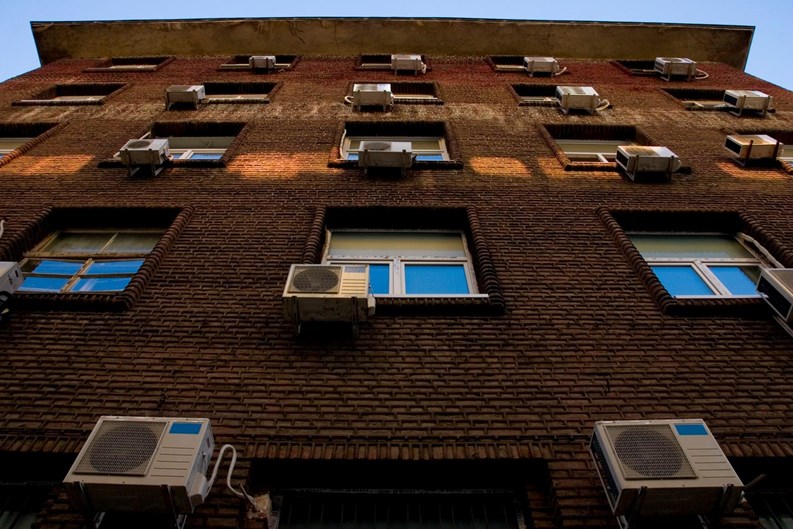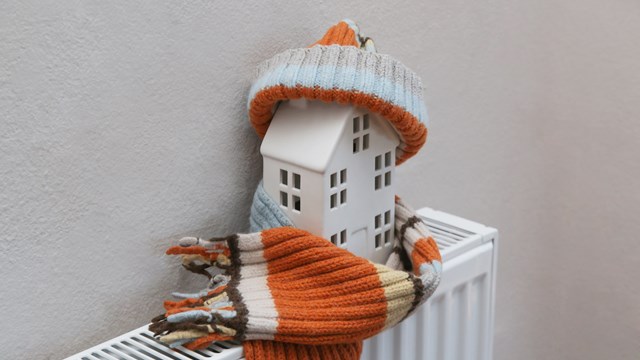One of the facts of life that apartment dwellers live with -- particularly those in older buildings -- is the window-unit air conditioner. Certainly the upside of having one is that it gets you through the airless, sweaty nights during the summer. But there also drawbacks: bulky window units are unsightly, and can lead to drafty conditions in the winter if left in place.
An option is to send your air conditioners on vacation for the winter. To where, you ask? There are several companies providing air conditioner removal-and-storage service in Manhattan, Queens, Brooklyn, and the Bronx. Generally these services include pick-up, storage for approximately 18 months, cleaning, and re-installation. Here are a few of them.
Air-Wave, an air conditioning company located in the Bronx, has been around for over 50 years. According to Harold, an Air-Wave employee in charge of storage, the company charges “$279 for the season for the first unit, and $269 for each additional unit for units loaded in the bottom half of the window. If the unit is top-loaded, meaning in the upper part of the window, there is an additional fee of approximately $50.” The storage fee includes a general cleaning of the unit. According to the company’s website, storage of your air conditioner will extend its life, and the cleaning process may also reveal health-related problems, which is particularly important for asthmatics and persons with allergies.
Located in the Long Island City section of Queens, CoolAir has been in the business for over 75 years. Manohari Sibchand, a company salesman, explains that CoolAir charges $279 for storage of units up to 18,000 BTUs that are mounted in the bottom of the window, while units over 18,000 BTUs are $330. Top-mounted units are $400 for the season. The fee is paid 50 percent at the time of pick-up and the balance upon re-installation, a negotiable arrangement. Like Air-Wave, cleaning service is also offered by CoolAir; a special steam-clean is an additional $100.
Sibchand offers three good reasons to store your air conditioner: “First and foremost, you get your view back,” he says. “Second, leaving the unit in the window for the winter in cold weather can damage the unit. And third, there are fewer drafts.” Who wants a fierce, icy wind blowing through their apartment in January anyway?
Howard Lupowitz, the owner of Mike’s Air Conditioning in Brooklyn, has been storing air conditioning units for decades. He also charges $279 per unit for the season, and includes the same pick-up, storage, cleaning, delivery, and re-installation service as Air-Wave and CoolAir. Lupowitz charges an additional $10 or so per flight above the third floor in walk-up buildings.
Lupowitz mentions a very important and sadly-growing problem with air conditioners in general. Many of them -- particularly the newer, imported models made primarily from plastic -- have a tendency to develop black mold, which can become a real health hazard. He recommends that customers buy American-made units with metal parts, and says they’re worth the additional expenditure.
In the final analysis, the question is whether storage is worth approximately $300 per year to the typical apartment dweller. The answer depends on what size and type of unit is being considered. Typically, most New York living rooms require a large unit of 12,000 BTUs or more. Machines like that--especially the better brands made of metal and made domestically--can run well above $1,800 per unit. Clearly, keeping that unit in top working order and out of the window is a real benefit. Smaller units of 5,000-8,000 BTUs, typically used in bedrooms, rarely cost more than $150 per unit. In that case it might not pay to remove and store your unit. You could buy two or three new units a year for the cost of storing and cleaning one. You might say it’s a unit-by-unit decision.
Either way, now that autumn is finally upon us, whether you’re storing your units at a warehouse or in the bottom of your coat closet, it’s time to get them out of your window and reclaim your view.
AJ Sidransky is a published novelist and staff writer at The Cooperator







Leave a Comment